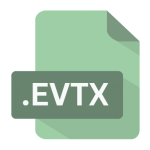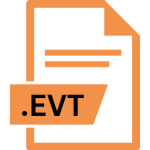.DLL File Extension

Dynamic Link Library
| Developer | Microsoft |
| Popularity | |
| Category | System Files |
| Format | .DLL |
| Cross Platform | Update Soon |
What is an DLL file?
The .DLL file extension stands for Dynamic Link Library. These are essential components in the Windows operating system and other Microsoft environments, designed to provide a way for applications to share functions and resources.
DLLs help in modularizing code, improving efficiency, and minimizing redundancy by allowing multiple applications to use the same library of functions.
More Information.
The initial purpose of DLLs was to streamline software development by allowing common functionality to be stored in a single place, rather than duplicated across various programs.
This approach not only simplified the development process but also reduced the overall size of applications and minimized memory usage.
In the early days, DLLs were primarily used for basic functions like handling graphics and managing user interfaces.
Over time, their role evolved to include more sophisticated tasks such as handling networking, file operations, and complex computations.
DLLs have been an integral part of software development, especially in the Windows ecosystem, contributing to the rapid growth and versatility of applications.
Origin Of This File.
The concept of dynamic linking originated in the early 1980s with the development of early operating systems that needed a more efficient way to handle code reuse and modularity.
The first instances of dynamic linking in Microsoft environments appeared with the release of Windows 1.0 in 1985.
The .DLL file format itself was formalized with Windows 3.0, introduced in 1990, where DLLs became a standard method for managing reusable code modules.
File Structure Technical Specification.
.DLL file is essentially a binary file containing compiled code, data, and resources that can be used by one or more programs simultaneously. The internal structure of a DLL file is complex, involving several key components:
- Header: Contains metadata about the DLL, such as its version and the architecture it supports.
- Export Table: Lists all the functions and data that the DLL provides to other programs. This table allows other programs to know what functionalities are available in the DLL.
- Import Table: Lists all the functions and data that the DLL requires from other libraries. This enables the DLL to use functionalities provided by other DLLs.
- Code Section: Contains the compiled executable code.
- Data Section: Includes static data that the DLL uses.
- Resource Section: Stores resources like icons, dialogs, and strings used by the DLL.
Technical specifications for .DLL files include:
- File Extension: .dll
- File Format: Portable Executable (PE) format, the same format used for .exe files.
- Platform: Primarily Windows, but there are implementations for other operating systems like Linux (with Wine) and macOS (with compatibility layers).
How to Convert the File?
DLL files are designed to be used by applications, not directly converted. You might need to extract or recompile DLL files for various purposes:
- Extracting Resources: Tools like Resource Hacker or DLL Export Viewer can extract resources (icons, images, strings) from DLL files.
- Recompiling: To modify or create a new DLL, you need the source code and a compiler. Languages like C++ and .NET languages are commonly used for this purpose. Use development environments like Microsoft Visual Studio to recompile or build new DLLs.
Advantages And Disadvantages.
Advantages:
- Code Reusability: DLLs allow developers to reuse code across multiple applications, reducing redundancy and maintenance efforts.
- Modularity: By dividing functionality into separate DLLs, software can be more modular, making it easier to update or replace individual components without affecting the entire system.
- Memory Efficiency: Multiple programs can share the same DLL in memory, which optimizes system resource usage.
- Version Control: DLLs enable versioning of components, allowing different applications to use different versions of the same library.
Disadvantages:
- Dependency Issues: DLLs create dependencies between applications, which can lead to conflicts if different applications require different versions of the same DLL.
- Security Risks: Malicious DLLs can pose security risks if they replace legitimate DLLs or are injected into running processes.
- Compatibility Problems: Updates to DLLs can cause compatibility issues if applications rely on specific behaviors or versions.
- Debugging Complexity: Issues with DLLs can be challenging to diagnose and resolve, especially if they involve complex interactions between multiple components.
How to Open DLL?
Open In Windows
- System: DLLs are automatically loaded and used by Windows and applications. To view the contents of a DLL or debug it, use tools like Dependency Walker, Microsoft Visual Studio, or PowerShell.
- Manual Interaction: Users typically do not open DLL files directly but may use them via programs that call their functions.
Open In Linux
- .so Files: Linux uses shared object files (.so) instead of DLLs. However, tools like Wine can run Windows applications, including those that use .DLL files, on Linux.
- Viewing: Use tools like
lddto list shared library dependencies orobjdumpto inspect the contents of a .DLL file.
Open In MAC
- Compatibility Layers: macOS does not natively use .DLL files but supports them through compatibility layers like Wine or CrossOver, which allow running Windows applications on macOS.











